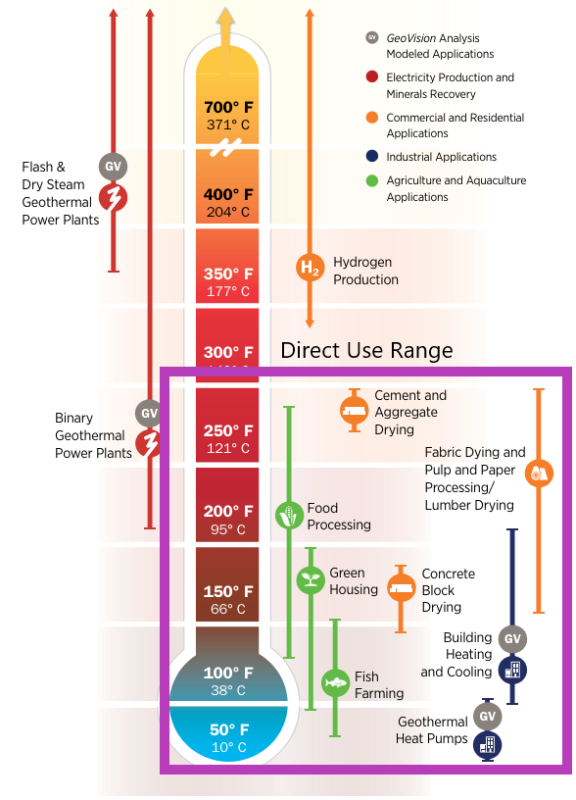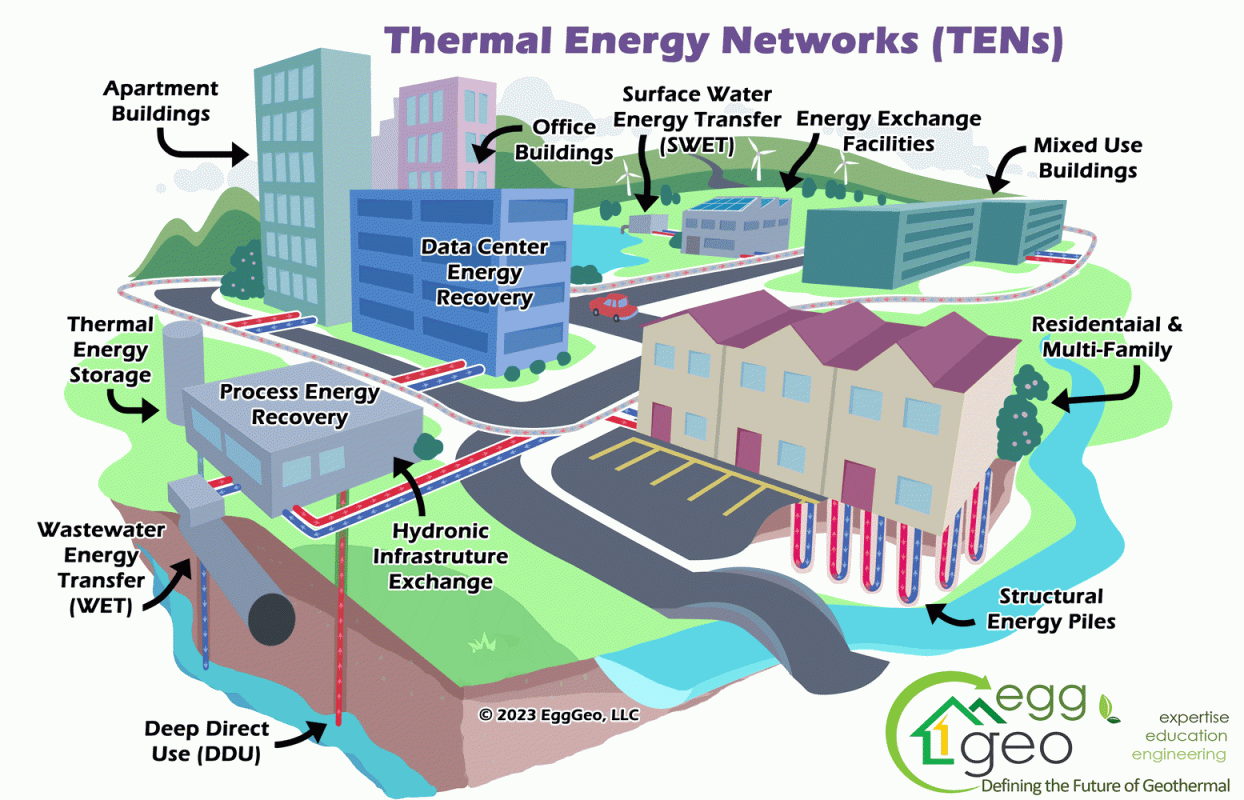Direct Use Geothermal

Geothermal District Heating involves using the heat from geothermal waters directly to heat individual and commercial buildings. Traditionally, such systems have used a combination of production and injection wells and a central pumping station to circulate fluids through a distribution network of piping. Geothermal heat pumps can also be used. These systems can also be designed to pump cold waters in order to cool buildings in the much same way.
Example: Boise, Idaho has had a geothermal district heating system for more than a century!
Thermal Energy Networks, or TENs, are utility-scale thermal energy infrastructure projects connecting multiple buildings into a shared network with thermal energy sources such as geothermal boreholes, surface water, and wastewater. An ambient loop thermal energy network operates at lower temperature differentials compared to traditional district heating systems, giving them a variety of advantages, including lower heat losses, flexible heat sources, energy storage compatibility and reduced infrastructure costs.

Deep direct-use (DDU) systems operate at greater depths than heat pumps or other conventional direct use systems and can deploy at a much larger scale. This emerging technology focuses on system efficiencies and could result greater opprtunities for large-scale, low temperature geothermal applications.
Geothermal fluids can be used for a variety of agriculture-related functions, including crop drying, milk pasteurization, and heating greenhouses.
Example: Farmer’s plants grow year-round in geothermal greenhouse in upstate New York.
Geothermal waters can be used in fish farms.
Geothermal fluids are used in several industrial applications, including food processing, heap leaching and process heat.
Balneology: Geothermal waters have been used for bathing and health for thousands of years.
Desalination: Geothermal fluids can provide the heat in thermal desalination processes, or as an energy source for reverse osmosis desalination.
Snow melting: A geothermal heating system can use the heat from the Earth to melt away snow and ice.
Example: Geothermal Energy Keeps New Jersey Driveway Free of Snow
National Renewable Energy Laboratory (NREL): Beyond Electricity
U.S. Department of Energy: Heat from Beneath the Ground – Working to Advance Deep Direct-Use Geothermal
U.S. Environmental Protection Agency: Geothermal Heating and Cooling Technologies
The World Bank: Direct Utilization of Geothermal Resources
ThinkGeoEnergy: Geothermal Energy Production & Utilisation
